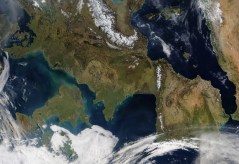The Role of Erosion in Shaping Earth’s Diverse Landforms
Erosion is one of the most powerful natural forces at work on our planet. It plays a crucial role in shaping different landforms that characterize the Earth’s surface, from majestic mountains to deep valleys and unique coastlines. In this article, we will explore how erosion affects various landforms, the processes involved, and its significance in our environment.
Understanding Erosion
Erosion occurs when soil and rock are worn away and transported by natural forces such as water, wind, ice, or human activity. This process is essential for sculpting landscapes over time. It can take millions of years for erosion to shape significant landforms; however, its effects can be seen more rapidly in areas with extreme weather conditions or human interference.
Types of Erosional Processes
There are several types of erosional processes that contribute to the formation of landforms: 1) Water erosion – This occurs through rivers and rainfall that carry sediment away from one place to another. It creates features like river valleys and floodplains. 2) Wind erosion – Winds can transport fine particles over vast distances, leading to formations such as dunes in deserts. 3) Glacial erosion – Glaciers carve out landscapes as they move slowly across the ground; they create U-shaped valleys and fjords.
Landforms Created by Erosion
Erosion leads to a variety of stunning landforms that we see around the world today. Some notable examples include: – Canyons: Formed by long-term river erosion cutting through rock layers over time (e.g., Grand Canyon). – Coastal cliffs: Created by wave action eroding coastal rocks (e.g., White Cliffs of Dover). – Plateaus: Elevated flatlands formed through uplifting followed by extensive erosion.
Importance of Erosion in Ecosystems
The erosional processes play an integral role not only in shaping geography but also in maintaining ecosystem health. They contribute to soil formation which supports plant life and influences water cycles within habitats. Healthy ecosystems depend on balanced erosion rates; too much or too little can lead to significant environmental issues.
Human Impact on Erosion Rates
Human activities such as deforestation, construction, mining, and agriculture significantly affect natural erosion processes. These actions often accelerate erosion leading to loss of fertile topsoil and increased sedimentation in waterways which can harm aquatic life. Understanding our impact is crucial for sustainable management practices aimed at preserving these vital landform processes.
In summary, erosion is a fundamental process that significantly contributes to shaping Earth’s diverse landforms while influencing ecological systems around us. By understanding this dynamic interplay between erosion and landscape formation—and acknowledging human impacts—we can work towards better environmental stewardship for future generations.
This text was generated using a large language model, and select text has been reviewed and moderated for purposes such as readability.






